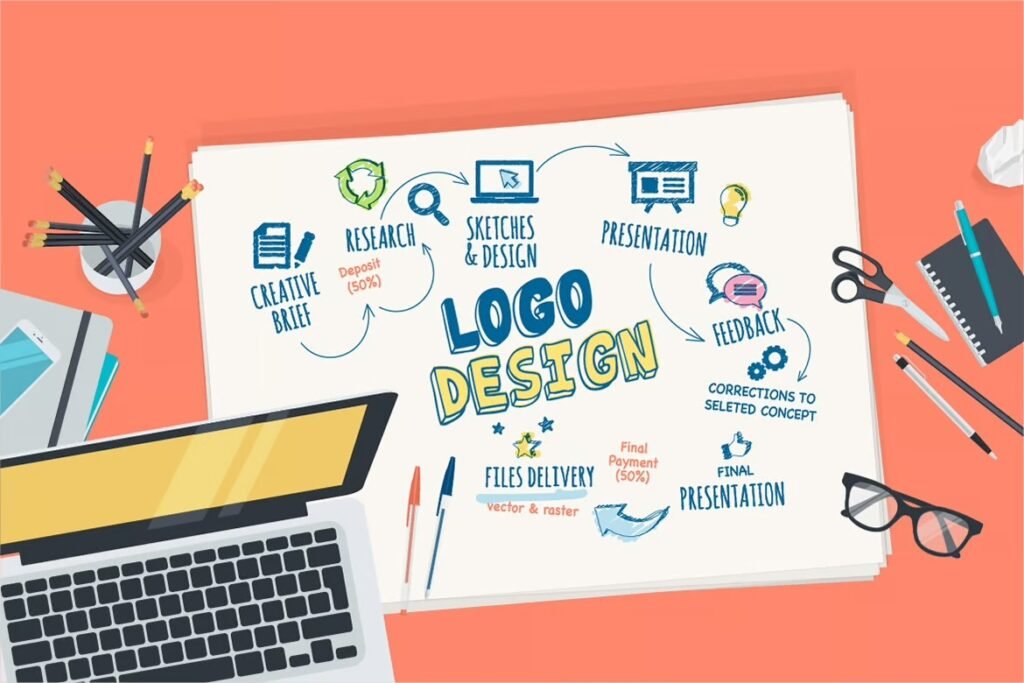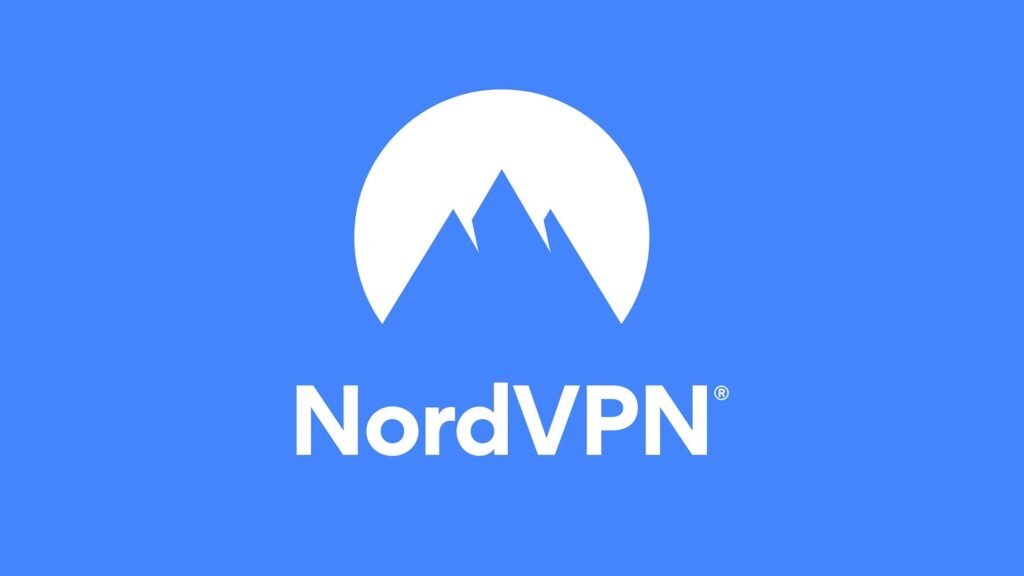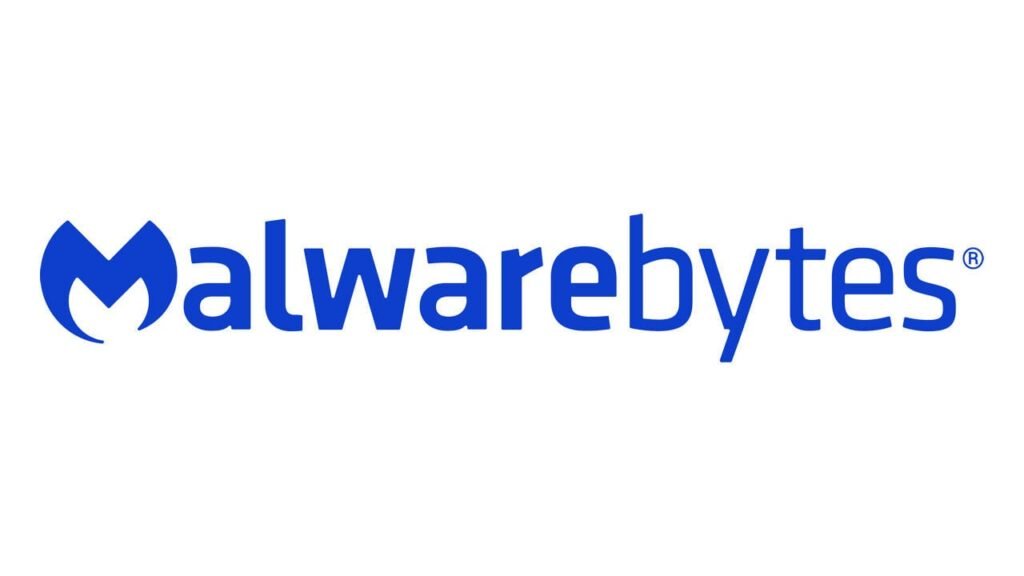Did you know that approximately 75% of consumers make quick judgments about a company based on the design of its logo? With such a significant impact on consumer perception, it's crucial for your brand to have a professional logo that stands out and communicates your identity effectively1. A logo is not just a pretty picture; it encapsulates your brand's essence and becomes a key part of your marketing strategy. Iconic logos, like those of Apple and Nike, are memorable because they are simple yet significant2.
This article will guide you through the essential steps to design a professional logo, from understanding your brand to implementing best practices in design. We’ll tackle everything from brainstorming concepts to refining your final product in this logo design tutorial, ensuring you leave with a comprehensive understanding of the graphic design logo process that can elevate your brand's identity.
Key Takeaways
- • A professional logo enhances trust and credibility.
- • Color plays a significant role in how consumers perceive your brand.
- • Simple logos are often more memorable and effective.
- • Understanding your brand identity is essential for effective logo design.
- • Gathering feedback can provide valuable insights into your logo's effectiveness.
- • Utilizing design tools can streamline the logo creation process.
What is a Logo?
A logo serves as a unique visual identifier for a company, encapsulating its essence in a simple mark. Understanding the logo meaning is essential for appreciating its role as a brand identity symbol. By definition, a logo is designed to distinguish a brand from its competitors, making it vital in marketing and brand recognition. Logos often incorporate specific colors, shapes, and typography aimed at conveying a company's values and mission.
For example, some iconic logos such as Apple, Coca-Cola, and Nike are instantly recognizable and demonstrate how a well-crafted logo can establish brand loyalty3. The color palette plays a significant role in this process; blue signifies trustworthiness, while red conveys passion and excitement3. While designing your logo, consider that 60% of the color palette should be dedicated to one primary color, 30% to a secondary color, and 10% as an accent3.
In the logo design process, you will typically start by evaluating your brand identity to grasp its goals and attributes, followed by a brainstorming session with multiple sketches4. The importance of sketching lies in exploring various concepts before transitioning to a digital format4. As you finalize your logo, ensure you create at least four variations to maintain adaptability across different platforms and media4.
Effective logos are utilized across various mediums, including websites, product packaging, and social media, emphasizing the need for a versatile design4. It is essential to refine your logo based on feedback, as this step then shapes the final, impactful design4.
Understanding Your Brand
Getting to know your brand is a crucial first step in the logo design process. By defining brand identity, you can align your logo with the core attributes of your business, including your values, personality, and mission. It's essential to ask yourself pertinent questions about your purpose and what you want your logo to convey. According to 85% of consumers, a professional logo is the first and most critical step in establishing a brand5.
Defining Brand Identity
When you focus on defining brand identity, consider the significant aspects that make your brand unique. This includes your company's mission, values, and the emotions you want to inspire in your audience. Research indicates that logos play an integral role in consumer perceptions, with approximately 75% forming opinions about a brand within seconds of seeing its logo5. To effectively showcase brand values, maintaining a consistent visual identity is imperative.
Exploring Your Brand Story
Brand story development goes beyond the mere products and services you offer. It encompasses the emotions and experiences related to your brand, fostering a deeper connection with your audience. Emotional connections created by logos can significantly influence consumer decisions; logos that resonate evoke positive feelings and enhance brand loyalty. Studies reveal that memorable and unique logos increase brand differentiation and loyalty5. By illustrating your brand's journey, you can develop a story that aligns seamlessly with your logo and resonates well with your target market.
Market Research and Competitor Analysis
Conducting thorough market research for logos and performing a comprehensive competitor logo analysis is essential for understanding your industry landscape. With roughly 200 million businesses globally, identifying top competitors enables you to dive deep into critical insights and trends that shape logo design6. You can categorize competitors into three levels: primary, secondary, and tertiary, ensuring a well-rounded perspective on the market dynamics you face6.
Start by evaluating logos within your niche using a structured approach that includes scoring each logo on a scale of 1 to 5 across designated criteria7. Make use of online tools like Logo Lab or Brandmark for a detailed analysis of your competitors' logos7. Furthermore, engage with customers through surveys to gauge how your logo stacks up against others, tracking metrics like brand awareness and engagement7.
Utilizing a 14-step framework for competitor logo analysis reveals insights into opportunities and market gaps, facilitating a strategic edge6. Key touchpoints you may want to analyze include visual branding and messaging, allowing you to uncover differentiators and trends that could influence your logo design decisions6.
Incorporating both primary and secondary market research methods is vital8. Consider purchasing competitors' products or services and employing online surveys to collect firsthand insights8. Furthermore, tools like Ahrefs and SEMrush can help analyze competitors' websites, offering valuable SEO data including targeted keywords and link profiles8.
By focusing on these areas, you can gain a comprehensive understanding of the industry trends in logo design that will inform your creative process and ensure your logo stands out in a competitive market.
Steps to Design a Professional Logo
Embarking on a professional logo design process involves multiple significant steps. Understanding these steps can aid you in creating a logo that resonates with your brand's identity and purpose. You can start with brainstorming logo ideas that reflect your brand's mission and vision.
Begin with Brainstorming
Brainstorming logo ideas is a creative and essential part of the logo design process. Take time to jot down words and symbols that represent your brand. Consider using mind maps to explore various concepts that align with your brand. This phase is not just about generating random ideas; it’s about deeply engaging with what your brand stands for. According to Paul Rand, the essence of a logo is considered the jewel in the crown of communication, highlighting its critical role in branding9.
Create Initial Sketches
After generating a broad range of ideas, the next step involves creating initial logo sketches. These rough drafts serve as a foundation for visualizing your thoughts and help in narrowing down concepts. Keep in mind that logos that are simple and uncluttered tend to have a more substantial impact, providing an immediate and clear message about the brand9. In this phase, try to employ different styles and shapes – possibly incorporating new fonts or visual puns that add character to your sketches. For instance, brands like Gold Spoon have cleverly integrated icons with typography, which can inspire your own approach10.
Refining and Selecting Top Concepts
With a collection of initial sketches in hand, it’s time to refine and select the most promising concepts. Look for designs that are not only memorable but also original, ensuring they don't blend in with industry trends, helping your brand stand out9. Balancing elements using principles of proportion and symmetry can elevate the aesthetic appeal of your logo. This refinement process is vital to confirming that your logo will effectively engage your target audience while embodying the values of your brand. Use feedback from peers or potential customers to gauge the effectiveness of the designs. Creating a logo that reflects your brand while ensuring versatility for various applications is crucial for long-term success9 than just a visual piece, it serves as a representation of your brand across multiple platforms.

Choosing the Right Logo Type
Selecting the right logo style can significantly impact how your brand is perceived. There are various types of logos to consider, each capable of conveying different messages and emotions. Understanding these can help you make informed decisions during the design process.
The most commonly utilized types include Wordmark logos, which focus on branding through typography, making them ideal for companies that want to emphasize their names. Approximately 50% of combination logos feature Wordmark logos, reflecting their suitability for longer brand names11. Lettermark logos, often referred to as monogram logos, streamline longer names by creatively using initials, making them effective for maintaining a concise identity11.
Pictorial marks utilize imagery to create an instantly recognizable symbol for the brand. These logos can be particularly meaningful as they connect directly with the audience's perceptions. In addition, Abstract logos employ unique geometric forms to communicate a brand's identity more abstractly and innovatively12.
Combination marks are the most common, merging text and imagery for a versatile approach to branding11. While Mascot logos bring a personable touch to a brand, emblem logos combine text and imagery to create a badge-like effect, often leaning towards traditional designs. Other notable types include 3D logos, which add depth and perspective, making them visually appealing, and Animated logos, which introduce movement and add engagement to traditional logo designs12.
| Logo Type | Description | Best For |
|---|---|---|
| Wordmark | Logos that focus on the company name in stylized typography. | Companies wanting to emphasize their names. |
| Lettermark | Logos that use initials or abbreviations creatively. | Brands with long names needing a simpler representation. |
| Pictorial Mark | Logos that rely on recognizable imagery. | Brands aiming for instant recognition. |
| Combination Mark | Logos that blend text and imagery. | Versatile branding approaches. |
| Abstract | Logos that use geometric forms to express identity. | Innovative branding methods. |
| Mascot | Logos featuring illustrated characters. | Brands seeking to convey personality. |
| Emblem | Logos that combine text and imagery in a contained design. | Creating a legacy feel for brands. |
When deciding on your logo type, think about your brand messaging and the emotional resonance you desire. Each type of logo serves to enhance your brand’s identity effectively, making understanding the different logo types explained essential in the design journey.
For further insights on the principles behind effective logo design, you can refer to essential steps for designing a professional12.
Logo Design Best Practices
Creating a logo that embodies your brand is essential to its recognition and success. Following logo design best practices can significantly enhance your logo's effectiveness. One of the core principles is the importance of simplicity in logo design. A logo that is clean and uncluttered allows for immediate recognition and aids in memorability, making it easy for your audience to recall after a quick glance9. With a detailed understanding of your audience, you can ensure your design resonates effectively.
Keeping it Simple
Emphasizing simplicity means removing unnecessary elements in a logo design. Streamlined logos not only maximize clarity but also embody the idea of being memorable and original, setting your brand apart from competitors9. Logos should evoke the brand's values without overwhelming potential customers with excessive detail. Simple designs can effectively communicate complex messages in a visually appealing way.
Ensuring Versatility and Scalability
Designers must prioritize scalable logo design to ensure that logos look great on various mediums, from business cards to billboards. Creating a logo as a vector file guarantees that your design maintains quality without distortion, allowing for adaptability across platforms9. Logos should encapsulate the brand vibe while remaining functional in both large and small formats, providing versatility that caters to different marketing needs10.

| Logo Element | Description |
|---|---|
| Simplicity | A clean, uncluttered logo design aids in immediate recognition. |
| Memorability | A logo that is easy to recall strengthens brand identity. |
| Originality | Distinct designs help brands stand out in competitive markets. |
| Versatility | Logos should function well across various formats and environments. |
| Scalability | Vector designs ensure logos remain sharp and clear at any size. |
By adhering to these logo design best practices, you can elevate your brand’s visual identity and create a lasting impact13.
The Importance of Color Selection
When designing a logo, the choice of color is crucial as it plays a significant role in conveying emotions and messages. Understanding color psychology in logos can help you make informed decisions while selecting logo colors that resonate with your brand identity. For example, blue evokes feelings of professionalism and trust, making it a favored choice for finance and healthcare brands1415.
Red, on the other hand, denotes passion and excitement, often used in the food and entertainment industries14. Yellow shines with warmth and friendliness, making it a suitable option for brands seeking a cheerful identity15. Green is associated with nature and renewal, appealing to eco-friendly companies1415.
For a timeless look, colors like black and white are popular choices. Black symbolizes power and luxury, while white represents purity and simplicity, both essential in logo design1415. As you consider your branding color palette, keep in mind the industry and message you wish to convey, ensuring your color choices align with your brand's core values and vision.
Here's a quick reference table that summarizes the meanings of various colors in logo design:
| Color | Associations |
|---|---|
| Red | Passion, excitement, hunger |
| Blue | Trust, professionalism, loyalty |
| Green | Nature, health, renewal |
| Yellow | Happiness, warmth, caution |
| Black | Power, sophistication, authority |
| White | Purity, clarity, simplicity |
| Purple | Luxury, creativity, elegance |
| Orange | Vibrancy, playfulness, energy |
| Pink | Femininity, charm, innocence |
| Brown | Reliability, warmth, solidity |
Font Selection and Typography
Typography in logos plays a fundamental role in communicating your brand's identity effectively. When making font selection for branding, it is crucial to consider various font types and their associated meanings. For instance, sans serif fonts, like Arial and Helvetica, convey modernity and simplicity, while serif fonts such as Times New Roman communicate tradition and professionalism16. This duality helps in choosing logo typeface that aligns with your brand values.
Current trends in typography highlight the significance of modern fonts, with wide and narrow styles gaining popularity17. These fonts, particularly those that are well-paired with contrasting styles, can create an engaging visual experience. Graphic designers usually recommend limiting your choices to two or three font options to maintain a balanced and coherent design18.
It's important to avoid outdated or overly used fonts as they may give a stale appearance17. When selecting a font, ensure that it is legible across various sizes and applications to maintain its visual integrity. Understanding the typographic hierarchy enhances readability, making your logo more impactful and user-friendly16. Brands like Coca-Cola successfully use typography to underscore their identity, employing Spencerian Script for a timeless feel16.

Ultimately, your choices in typography should convey the personality and tone of your brand. Whether you opt for elegant script fonts for a high-end identity or handwritten fonts for a more personalized approach, ensuring consistency across all branding materials helps reinforce your brand identity18. Remember to download fonts legally to avoid copyright issues, adding a layer of professionalism to your branding efforts17.
Gathering Feedback
As your logo design approaches completion, the logo feedback process becomes a crucial step. It's essential to gather valuable insights from various stakeholders, peers, or potential customers to assess how well your logo conveys your brand message. Actively seeking constructive criticism for logos helps you refine your design and ensure it resonates with the target audience.
Consider posing focused questions during feedback sessions. Ask about:
- • Recall: Is the logo easily remembered?
- • Resonance: Does it evoke the desired emotions?
- • Overall Impression: What is the immediate reaction to the design?
Utilize different methods for testing logo designs. A/B testing with variations can reveal which logo versions perform better, while surveys can capture broader feedback trends. By collating this feedback, you can make informed refinements that elevate the quality of your logo further.
| Feedback Method | Description | Benefits |
|---|---|---|
| A/B Testing | Compare two variations of the logo. | Identifies which design is more effective. |
| Surveys | Collect quantitative and qualitative responses. | Gathers wider audience feedback. |
| Focus Groups | Engage a small group in discussions about the logo. | Provides in-depth insights and group dynamics. |
Incorporate the feedback you gathered into a revision plan to make your logo well-aligned with your brand's identity, ultimately enhancing its impact in the market19.
Utilizing Design Tools and Software
Creating a professional logo involves leveraging precise and effective logo design tools that can bring your vision to life. With platforms like Adobe Illustrator, Inkscape, and CorelDraw, you gain access to powerful graphic design software for logos that cater to various skill levels. These tools emphasize vector graphics, allowing for easy resizing and recoloring of logos without compromising quality20.
If you're on a budget or in need of quicker solutions, numerous free logo makers like Canva, Wix Logo Maker, and Designhill Logo Maker enable you to customize logos effortlessly. While these online tools offer an accessible route for startups and small businesses struggling with design costs, experienced designers often caution against relying on them due to their tendency to produce generic designs213.
The design process involves crucial stages such as brainstorming, sketching ideas, and refining concepts using your chosen software. Most importantly, receiving feedback from target audiences or peers is key to ensuring your logo resonates20. Consider using platforms like UsabilityHub for structured feedback, which supports the development of memorable and timeless logos21.
Conclusion
In your logo creation journey, remember that designing a professional logo is more than just a pretty graphic; it's a critical component of your brand identity through logos. As highlighted throughout our exploration, a well-crafted logo not only reflects your brand’s essence but also influences first impressions, serving as the initial touchpoint for potential customers22. By understanding various types of logos, such as wordmarks, letter marks, pictorial logos, and abstract logos, you can select the style that best aligns with your brand values23.
Equipped with the right design tools—ranging from vector graphic software like Adobe Illustrator to user-friendly options like Canva—you can streamline your creative process and refine your vision23. Ultimately, a successful logo is achieved through thoughtful research, brainstorming, and iteration, ensuring that it resonates with your audience and stands the test of time. Strive for simplicity and clarity in your designs, as these elements combined with effective typography will enhance both aesthetics and functionality, driving meaningful connections with your audience22.




